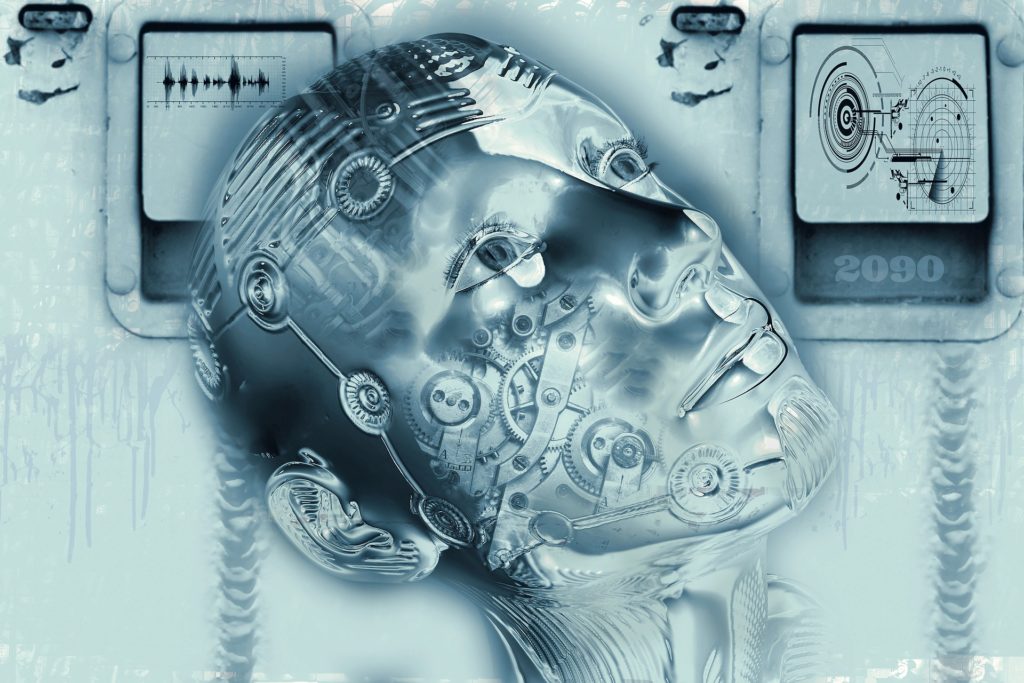As we look into the future, one thing that is coming like a hypersonic cruise missile is the concept of the Singularity—or the merger of man and machine. One of the interim steps is to create a far more efficient man-to-machine interface, which would allow us to communicate with our computers at speeds much closer to machine speeds and not limited by how fast we can type or talk.
This would be huge, but it does have long term implications that the old movie Forbidden Planet partially highlighted in that we are far from ready for the concept of potentially broadcasting out thoughts. Elon Musk, who increasingly looks like a guy who hasn’t found a risk he isn’t willing to take, has promised he will be able to implant a chip in our heads in around a year to wirelessly connect our brains to machines.
Initially this is focused on users with mental disabilities or in need of prosthetics and it could have an initial beneficial impact in those two areas. But the promise is to make this broadly available—hardwiring us to the computers we work with and that provides a Dark Mirror-like series of frightening potential outcomes.
Now, that isn’t to say this couldn’t be incredibly beneficial, but Musk has shown a near complete lack of concern for potential risks in his efforts and that suggests this could end badly.
Let me explain.
The Problem with a Man-to-Machine Interface
When you interface two systems, typically you look at how the systems communicate to the outside world and then create an interface that connects those two systems. Machines naturally use wired and wireless networks to communicate out and people use speech, text, touch, and physical gestures. Efforts, so far, have been to adapt people to communicate to machines by using keyboards, mice, touch screens, and speech none of which are natural to machines and most of which aren’t natural to either party.
Machines and people process information at different speeds and in different ways, making the task of creating a more efficient interface exceedingly difficult. While machines have been altered over time—evolved if you will—to incorporate high speed bidirectional interfaces, people only have one high-speed interface—sight—and it isn’t bidirectional. Further complicating this, a human’s high-speed visual interface is optimized for objects not language. So, you can, as a human, receive a lot of visual information quickly with a picture but pictures don’t communicate abstract ideas, feelings, or non-physical ideas very well.
So, to make this work, humans need to be enhanced with an interface that allows for the high-speed exchange of concepts and ideas to match the one that machines already have. Thus, Musk’s concept of an implanted chip.
Implanted Chip Problem
The new problem with an implanted chip is that we are biological entities not mechanical robots which means that, over time, we organically change. Hardware, at least right now, doesn’t. In addition, radio waves have proven to be dangerous when placed close to the body making this solution doubly problematic. The chip initially can’t alter itself to adapt to a changing human and the method it communicates might be hazardous to that human over time.
There is also the potential for the chip to be hacked and either do harm to the human (catastrophic failure) or open the human up to unprecedented monitoring. At the very least this would suggest some level of discipline regarding thoughts that currently doesn’t exist. And this isn’t just for unauthorized monitoring either, a random thought while on social media, could result in the same kind of damage to your image and employability that an ill-conceived Tweet does today, and you could do it without realizing it. The potential to abuse a chip like this by governments and criminals would be unprecedented. And if the interface was used to operate a prosthetic that old gag your older sibling did by forcing you to hit yourself could become a global problem for those with radio controlled robotic prosthetic arms. Recall the hack that turned insulin pumps into killers, this has an far greater potential for harm at even a greater scale.
Finally, the interface in the human should be organic (so it can naturally adapt and be powered by the body) and it should communicate optically because that is arguably the least risky high-speed communication technology (short of quantum entanglement which is, as yet, untested) available to us. Optical communication is also far easier to protect given it is directional by nature and you could use optical cables to provide even greater security. (Having people walking around broadcasting their thoughts would be extremely problematic given how poor our thought control currently is).
Wrapping up
There is no doubt we are on the road to the Singularity and that what Musk proposes would be a massive step towards that outcome. But, his willingness to take incredible risks—while critical to the advancement of efforts like this—is incredibly risky for those that adopt this technology. We haven’t thought through the implications of broadcast thought. Our security technology is inadequate for protecting our smartphones—it certainly isn’t even close to ready for protecting our brains. Even if this was just for prosthetics, we still must have better defenses for the problems of hacking those prosthetics than what we had for those wireless insulin pumps.
While our abilities with implanted hardware continue to improve, using non-organic parts remains problematic for bodies that change with age. Even with existing non-electronic prosthetics people tend to age out of them and, particularly if you are implanting something in your brain, you sure don’t want to have to surgically replace it. (The Musk technology uses mesh of embedded wires creating a “neural lace” avoiding the tiny blood vessels in the brain. Imagine how hard it will be to implant these. Now imagine how much harder they would be to remove without doing massive damage to that brain.)
Clearly, they will need FDA approval, but this is so cutting edge I really doubt if the FDA has yet developed a process that can assess whether the risk is acceptable. Musk isn’t alone. DARPA, Kernel and Facebook are working on similar technologies.
There is no doubt in my mind that we need a far better man-to-machine interface, but we also need to make sure that the result doesn’t do more harm than good to the individual or the human race. That last bit is the part that doesn’t yet seem sorted.
- IBM Uses AI for the Next Generation of Support - July 19, 2024
- The Secret Problem with PC Demand: MDF Isn’t Working - July 14, 2024
- Lenovo Yoga Slim 7x May Be the Best Bargain of New Snapdragon AI PCs - July 5, 2024




Comments are closed.